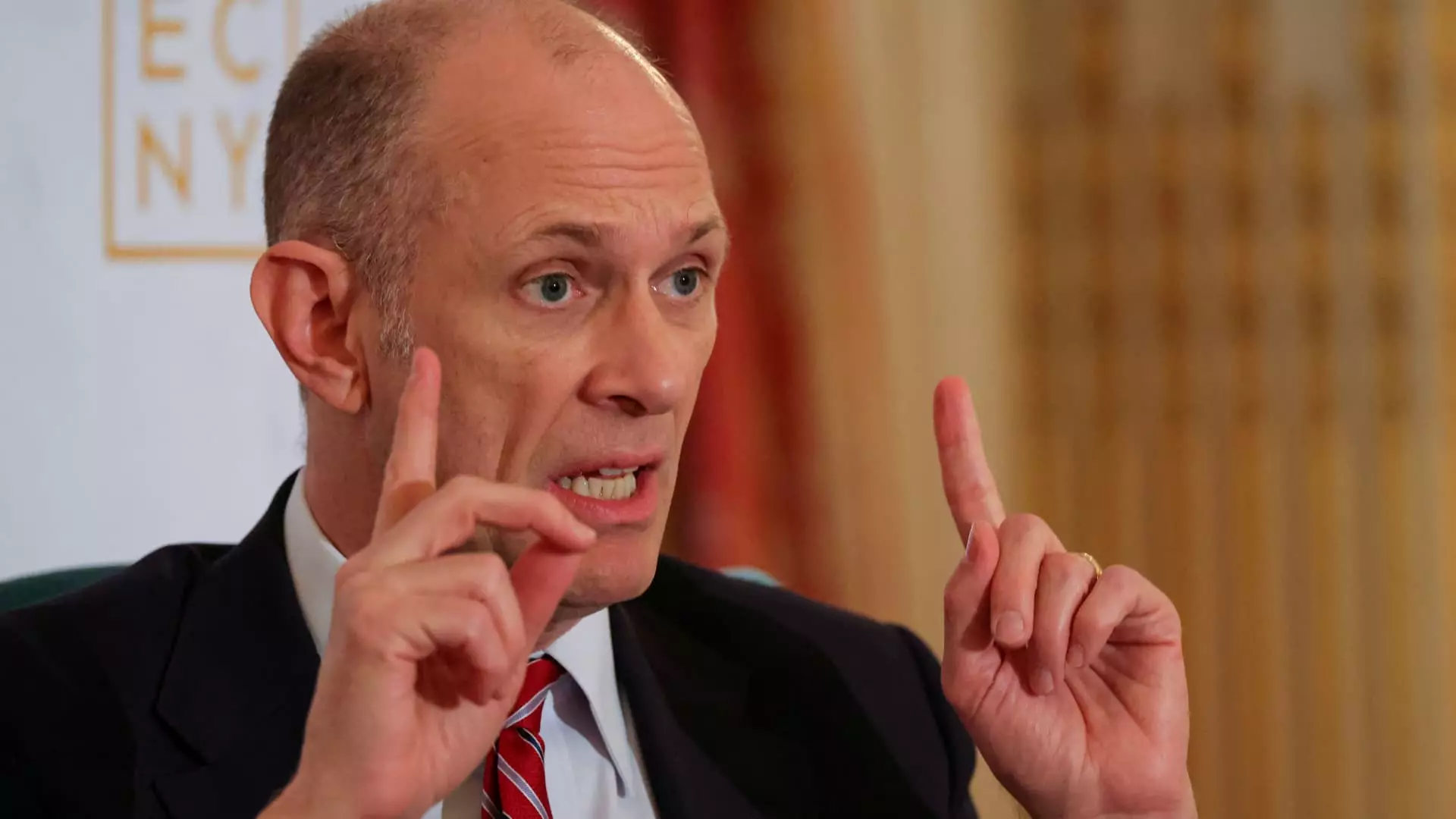In a world governed by complex financial systems and interconnected economies, even a single political figure’s proclamations can cast long shadows over fiscal stability. Recently, Chicago Federal Reserve President Austan Goolsbee has expressed concerns about the erratic policy landscape shaped by President Donald Trump’s tariff threats. While Goolsbee sees a long-term trend toward lower interest rates, the immediate reality is that indecisiveness reigns. The situation is like a ticking time bomb, as the Fed must tread carefully amidst Trump’s unpredictable tariff threats that not only disrupt trade relationships but are also likely to hinder necessary changes in monetary policy. This is a crucial juncture wherein economic casuistry has tangible repercussions—for both consumers and corporations alike.
Tariffs: A Double-Edged Sword
When Trump threatened to impose 50% tariffs on products from the European Union and levied a 25% tariff on iPhones not produced domestically, markets responded with volatility that echoed throughout the financial sector. These maneuvers do not merely act as economic tools; they are also potent political symbols intended to resonate with a specific voter base. However, as Goolsbee aptly noted, these policies may induce stagflation—an ominous scenario where economic growth stalls, yet inflation remains high, crippling consumer purchasing power and eroding savings. It’s bewildering that a government would risk such a devastating economic landscape in pursuit of political capital. The responsible path would require a careful balance of trade policies, yet what we are witnessing is more akin to an amateur’s game of chess played without a clear strategy.
The Ripple Effects on Inflation and Employment
While Goolsbee remains cautiously optimistic about the potential for robust economic growth, the reality on the ground bears a troubling complexity. Rising tariffs signify not just increased costs for businesses but also a looming specter of inflation that most consumers dread. Prices may skyrocket, but the critical question remains how significant these increases will be. Economically literate individuals are already feeling the pinch; higher prices on consumer goods could stifle demand and thus impact employment rates adversely. Furloughs and layoffs could become all too common as companies react to shrinking margins and eroded consumer confidence. The ripple effects of such policies are not to be underestimated; they encompass everything from food costs to housing rents.
Federal Reserve on the Tightrope
Central bankers traditionally steer clear of engaging deeply in trade and fiscal policies to maintain a semblance of independence. However, with political decisions affecting markets profoundly, the Fed finds itself in a precarious position, needing to assess the potential outcomes of the current administration’s decisions. Goolsbee instinctively grasps the dilemma; uncertainties related to tariffs place an increased burden on monetary policy formulation. If the Fed acts too slowly or too quickly in response to inflationary pressures, it risks exacerbating existing economic turbulence. The Federal Open Market Committee meetings become battlegrounds of both economic theory and political realities, as they jostle for clarity amid confusion.
The Path Forward: A Balancing Act
As officials gear up for the upcoming FOMC meeting, the stakes have never been higher. Unemployment rates are reportedly stable, and there are signs that inflation will stabilize; yet, the specter of tariffs clouds the forecast. Goolsbee’s reluctant acknowledgment that policy direction might not be easily defined underscores the inherent risks of economic management in the era of “America First” mantra. Maintaining a course toward lower interest rates while navigating the treacherous waters of external threats requires exceptional foresight and astute policymaking. The dual lanes of inflation management and employment stabilization must be essential goals, but achieving them without falling prey to systemic shocks remains an uphill battle.
While Goolsbee’s insights offer a flicker of hope for the economy—ranging from expected rate cuts to job stability—there’s an unsettling undercurrent of risk. The American economy cannot afford to invest its future on trepidation and threats that border on recklessness. The clarity of an unwavering path is desperately needed to guide consumers, businesses, and officials alike through the fog of uncertainty.

